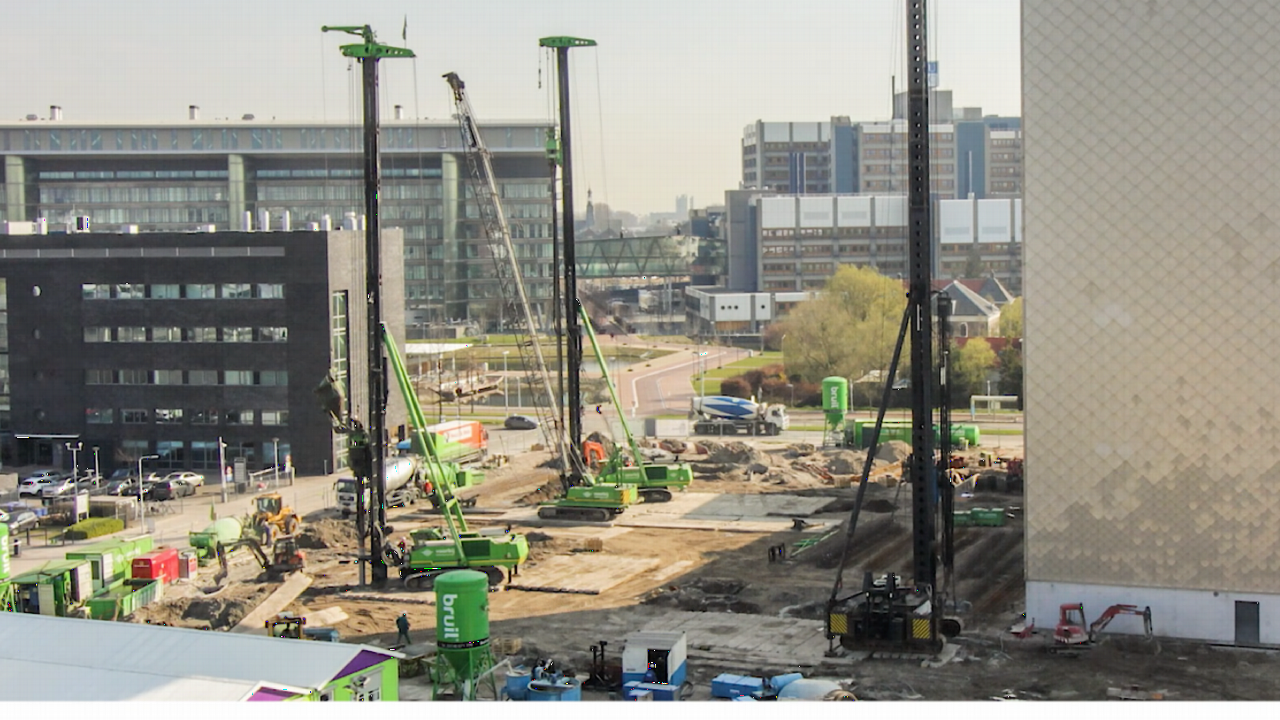Newdevelopments
Parking garage and biodiversity garden
In 2024, we started construction of a new parking garage on the Mendelweg, diagonally behind the Naturalis building. As soon as the parking garage is ready, the current parking lot behind Naturalis will make way for the biodiversity garden.

Museum, collection and research activitiesbrought together
Based around the existing collection tower, an impressive building has emerged that is capable of housing the collection, the research activities and the museum under one roof. The expansion reflects the development of Naturalis into the national biodiversity center for the Netherlands.


A connectingbuilding
The Naturalis building was designed by Neutelings Riedijk Architecten (NRA). The mighty central hall is where the old building and new building meet. The architecture is inspired by natural shapes: honeycomb, cat’s eyes or do you see leaves? In a sea of light, comin from every angle, all functional areas of the new building come together in the atrium; collection, research and the museum. This is also the place where our staff, scientists, families and students meet. The building provides room for our growing collection and increasing numbers of visitors and scientists.

Sustainableexpansion
Thanks to our own geothermal heat pump system, sustainable ventilation, 100 percent LED lighting, solar panels, green roofs, an energy-friendly climate control system and gallery spaces with flexible layouts, Naturalis is ready to face the future.
Naturalmaterials
The building is characterised by the use of robust materials with a long lifespan: natural stone, oak, concrete, glass and steel. The natural ageing process will further enhance the character of these materials over the years.


State-of-the-artresearch facilities
The new research facilities mean that Naturalis satisfies the highest standards for ground-breaking research into biodiversity. Every day, our research staff are hard at work using the latest techniques such as genetic research, 3D modelling and Artificial Intelligence, with the aim of contributing to facing the challenges that focus on the protection of the natural resources of our planet.
Texturesby Iris van Herpen
With her pattern of three-dimensional relief sculptures, the internationally renowned Dutch fashion designer Iris van Herpen has contributed a remarkable sensation of space to the natural stone facade. Inspired by evolution and the shapes it brings about, she designed 263 panels that cover a total distance of more than a kilometre, spread across both the inside and the outside of the museum. Thanks to a new technique developed specifically for this design, the concrete shapes suggest a feeling of silky smoothness. They appear to be made of fabric, just like the innovative couture created by Van Herpen for celebrities such as Lady Gaga, Beyoncé and Björk.


Artworkby Tord Boontje
A collection of almost 100 wall panels produced in the form of collages that mix together photographs and drawings are located throughout the museum. These visual stories, which reflect a wonderful world inspired by nature, were created by the Dutch industrial designer Tord Boontje who lives and works in London. Boontje is above all renowned for his pieces of jewellery, lights, fabrics and furniture finished with rich flower motifs. For him, Naturalis is a place packed with inspiration.
References Tord Boontje


Moreart
Besides the art inside the building, there is also an enormous piece of art on the facade. The digital artwork called Lust for Life was made by Giny Vos and has graced the facade of the original building since 2000. The dark shape represents Lake Victoria in Africa. Because of the different colored, moving lights, it can even be admired from the city center at night. These lights behave like microorganisms in water. When looking at cells in water through a microscope, you can see them move, collide, grow, multiply and explode, just like the lights on the building.

42 Millionplants, animals, rocks and fossils
Naturalis houses a natural history collection that has grown constantly since it was started in 1820. Thanks to digitalisation, collection data are now accessible that are essential for scientifically supported future scenarios for nature.
See our highlights (in Dutch)

